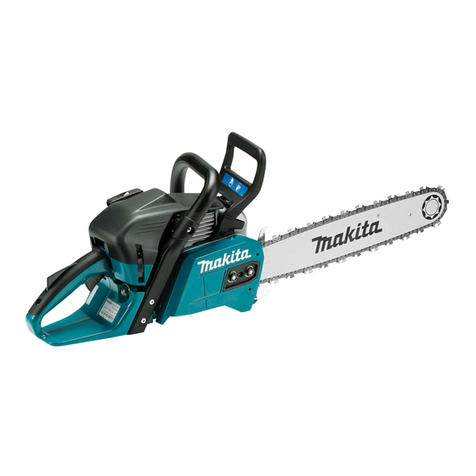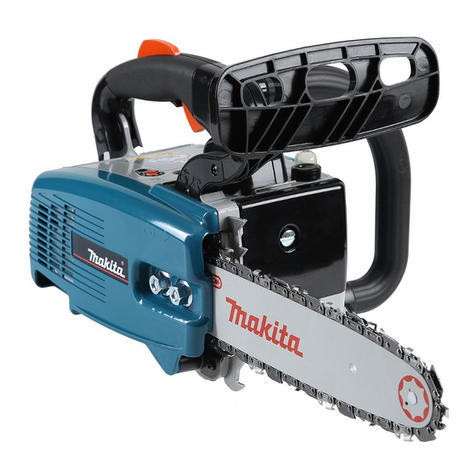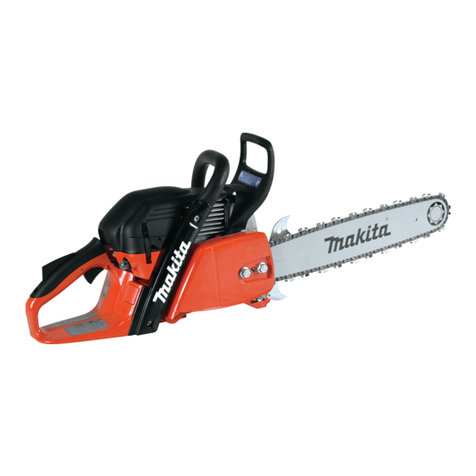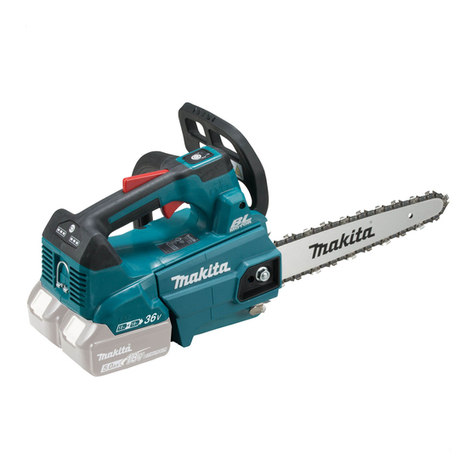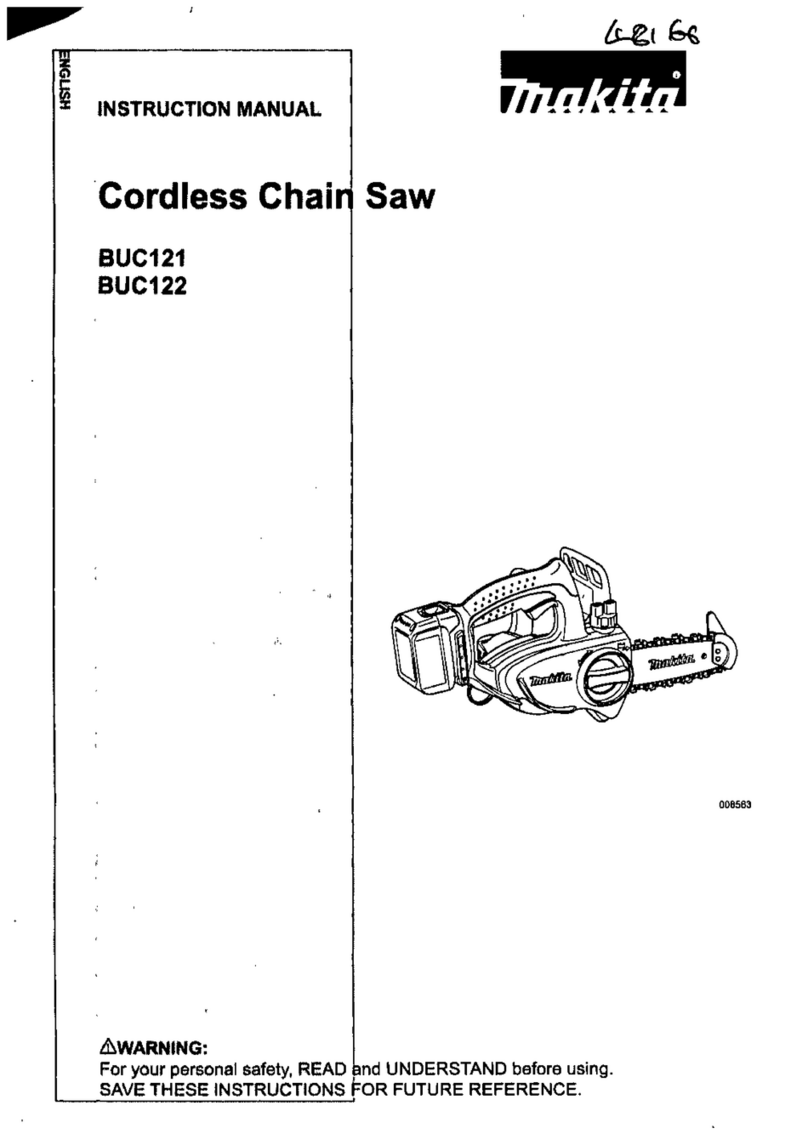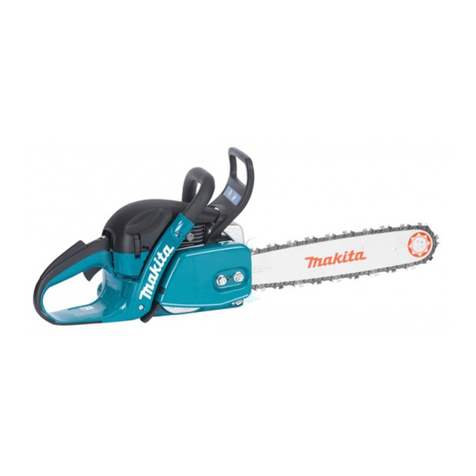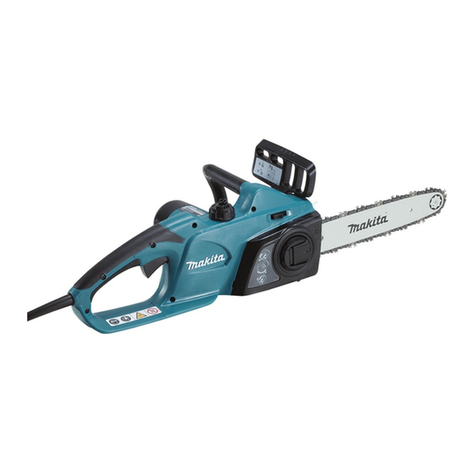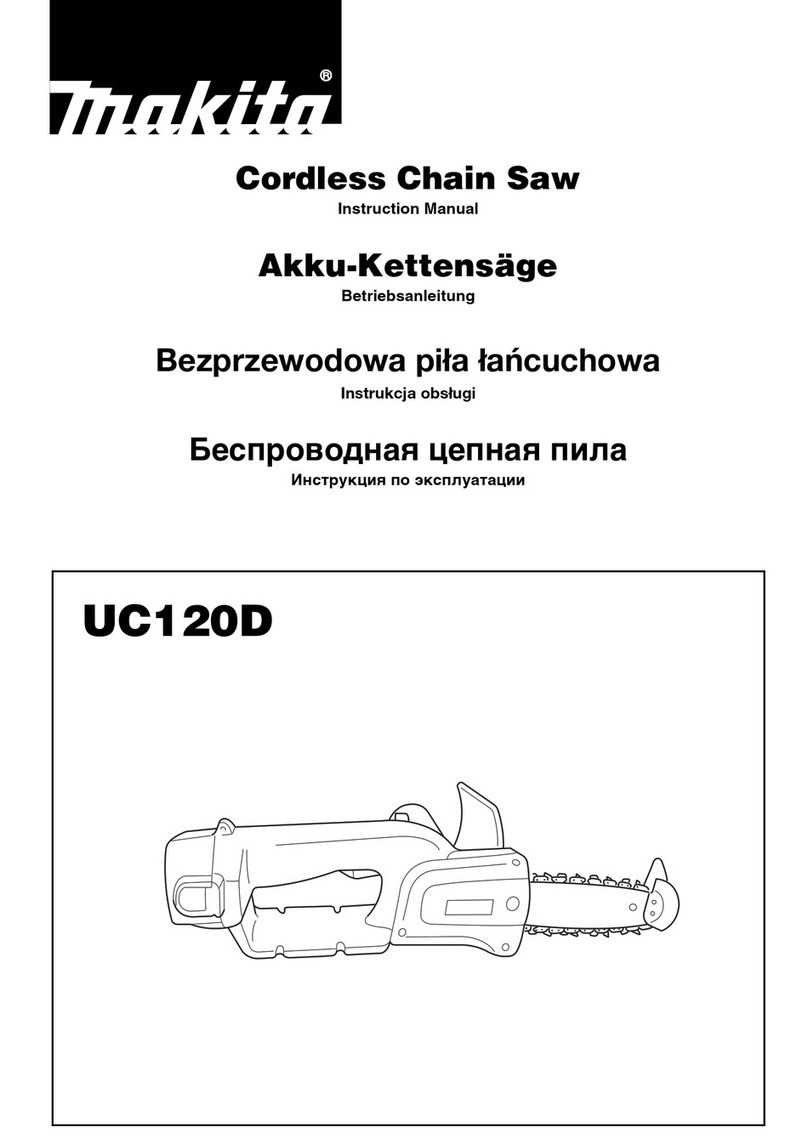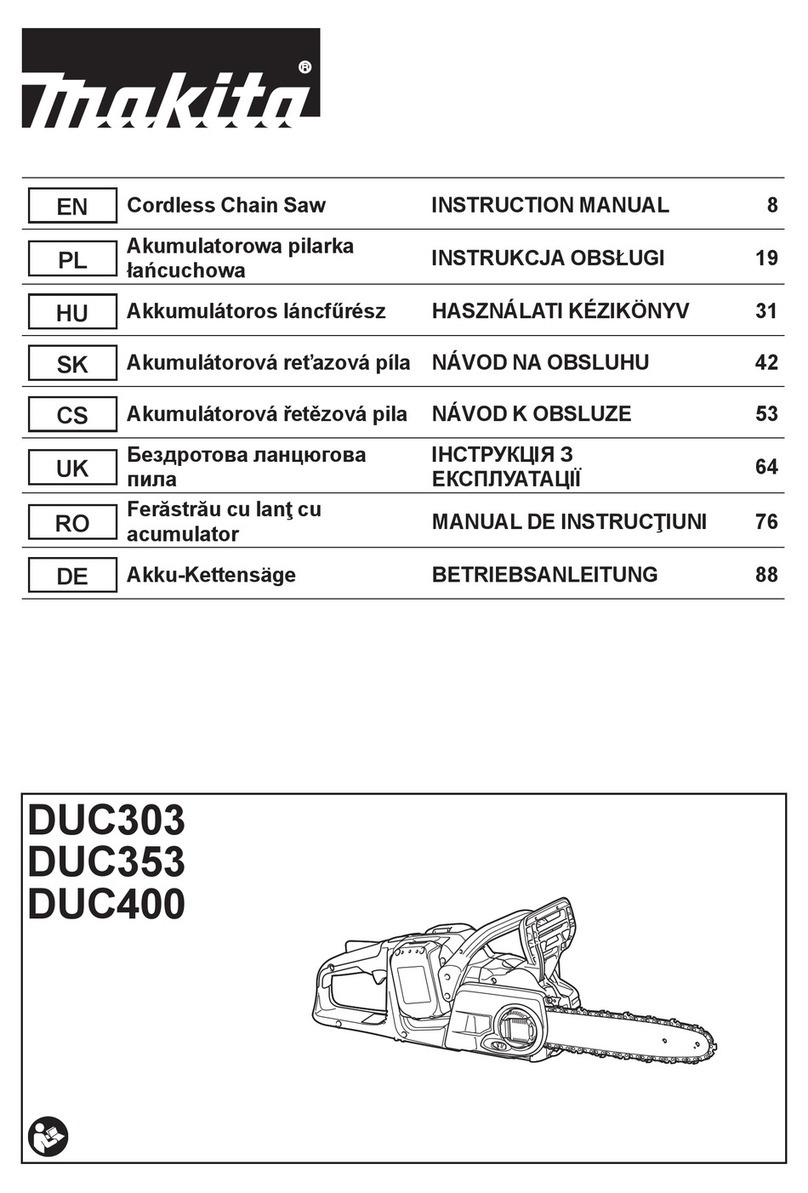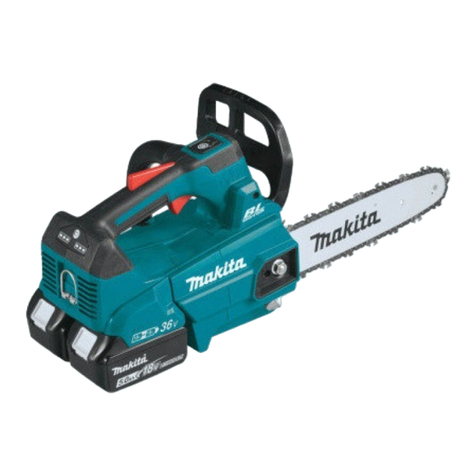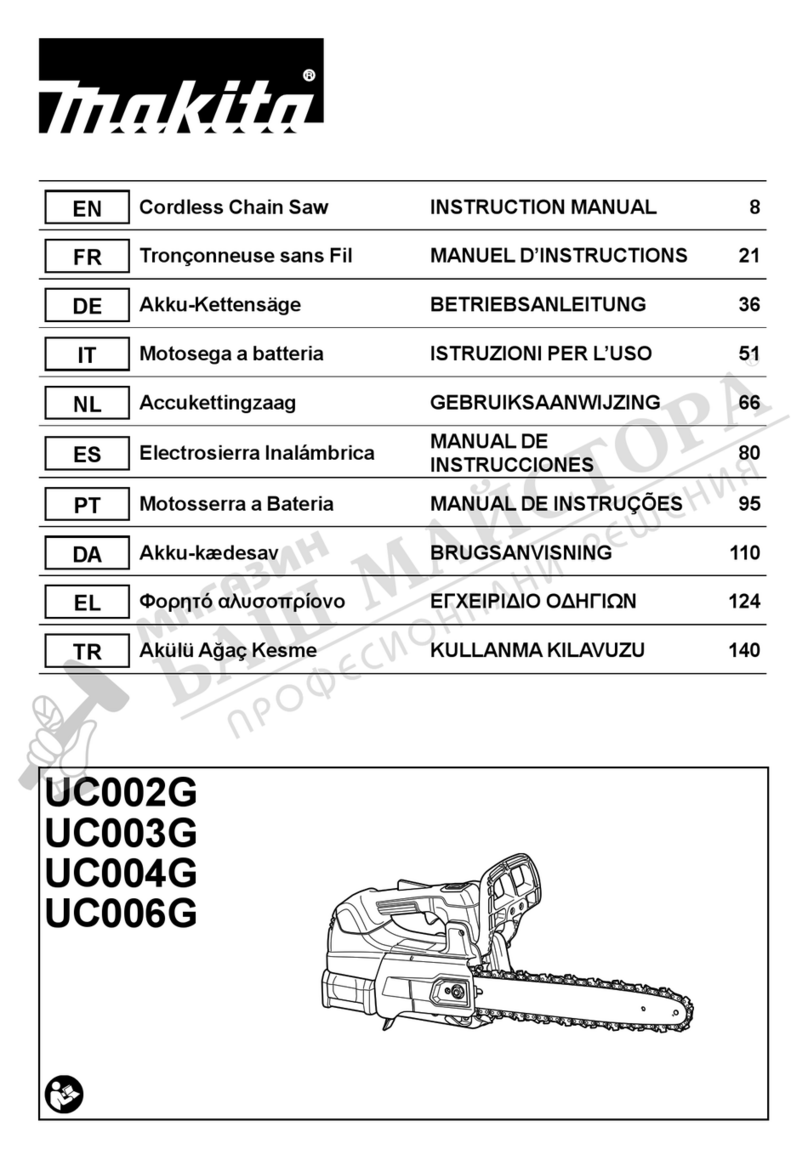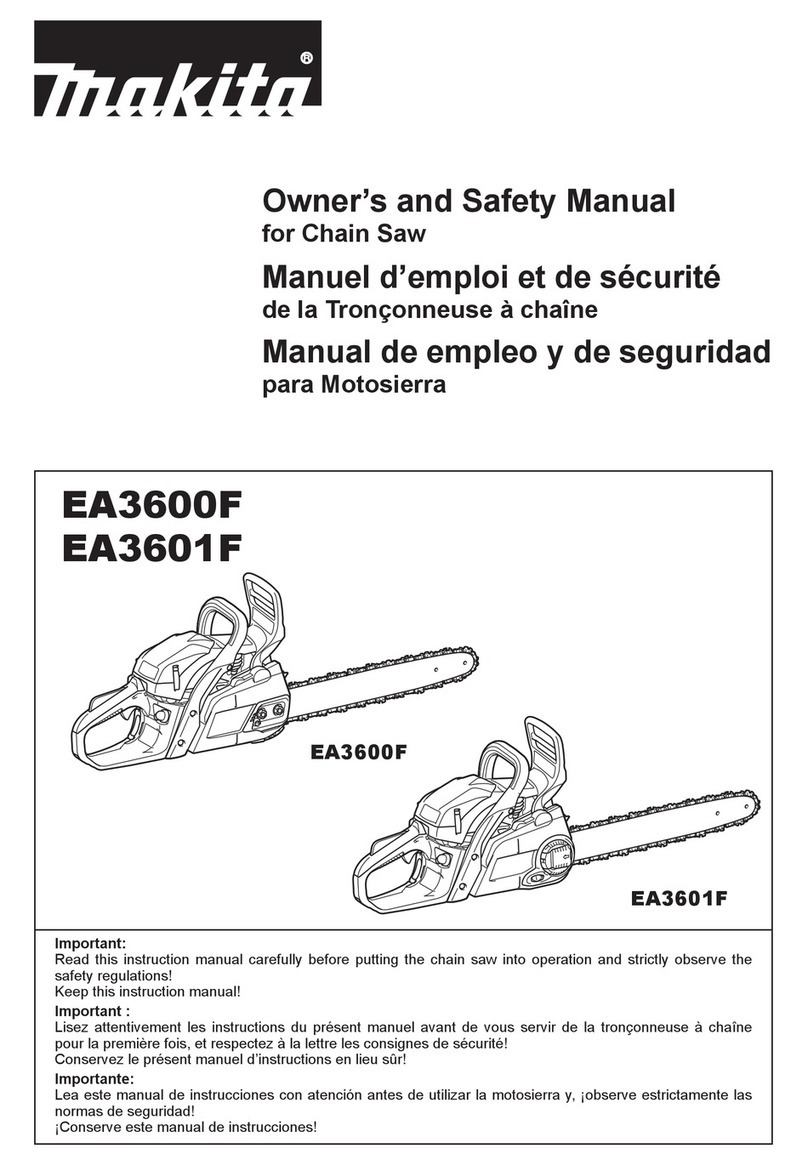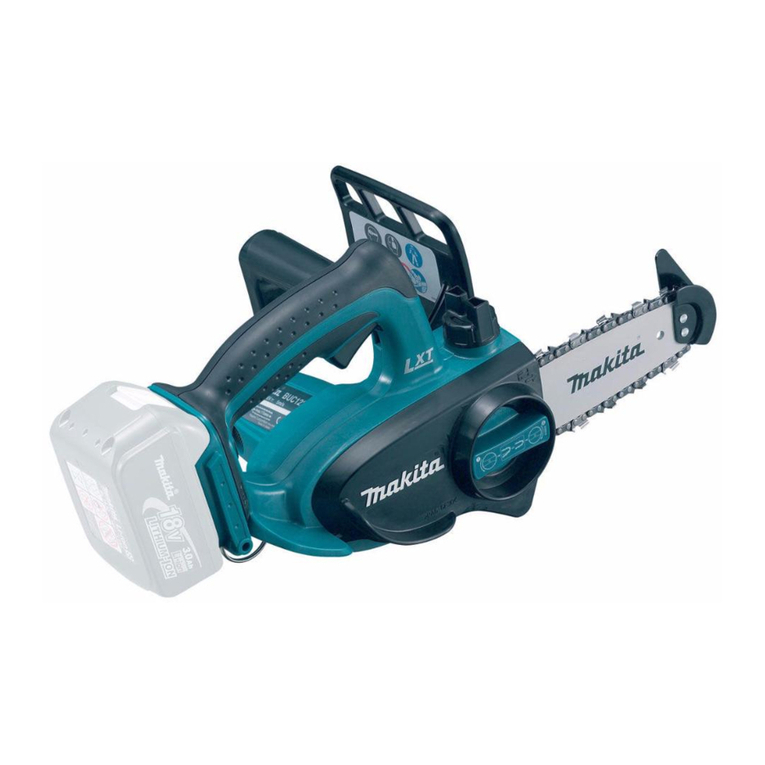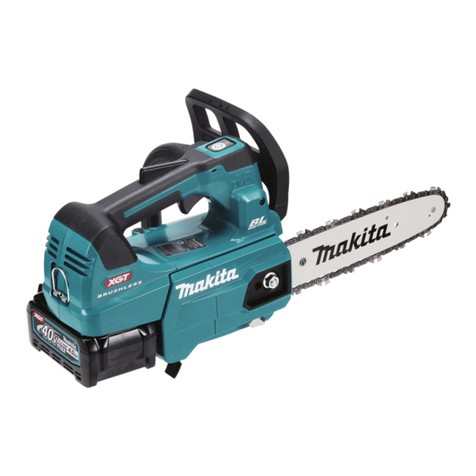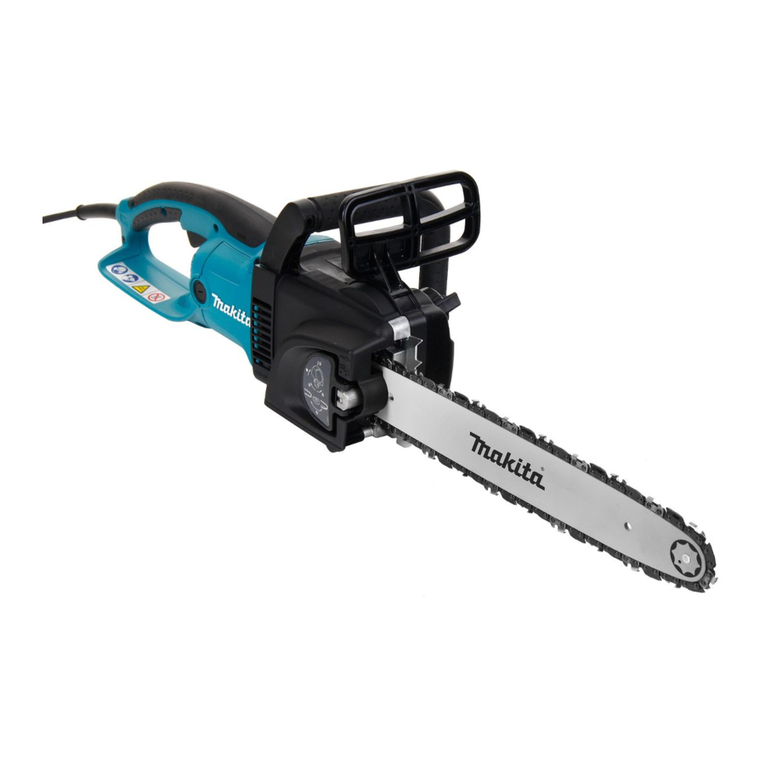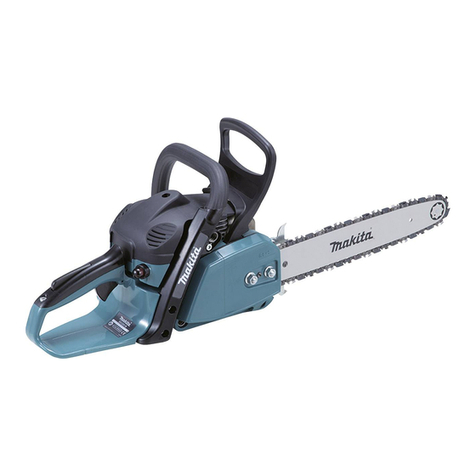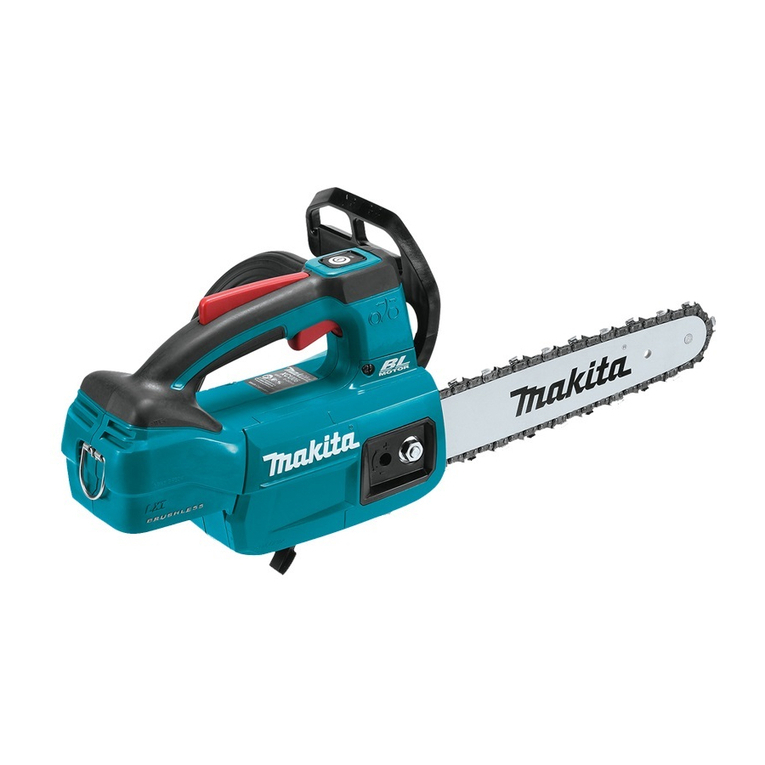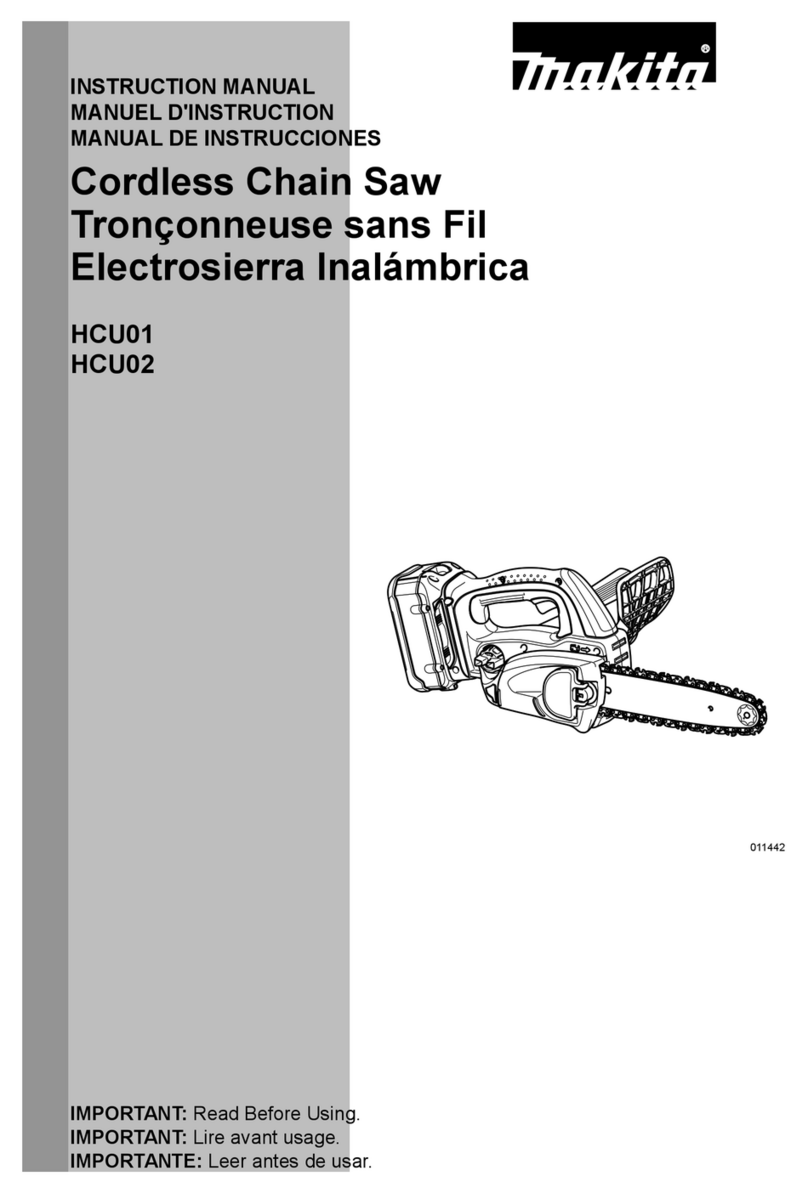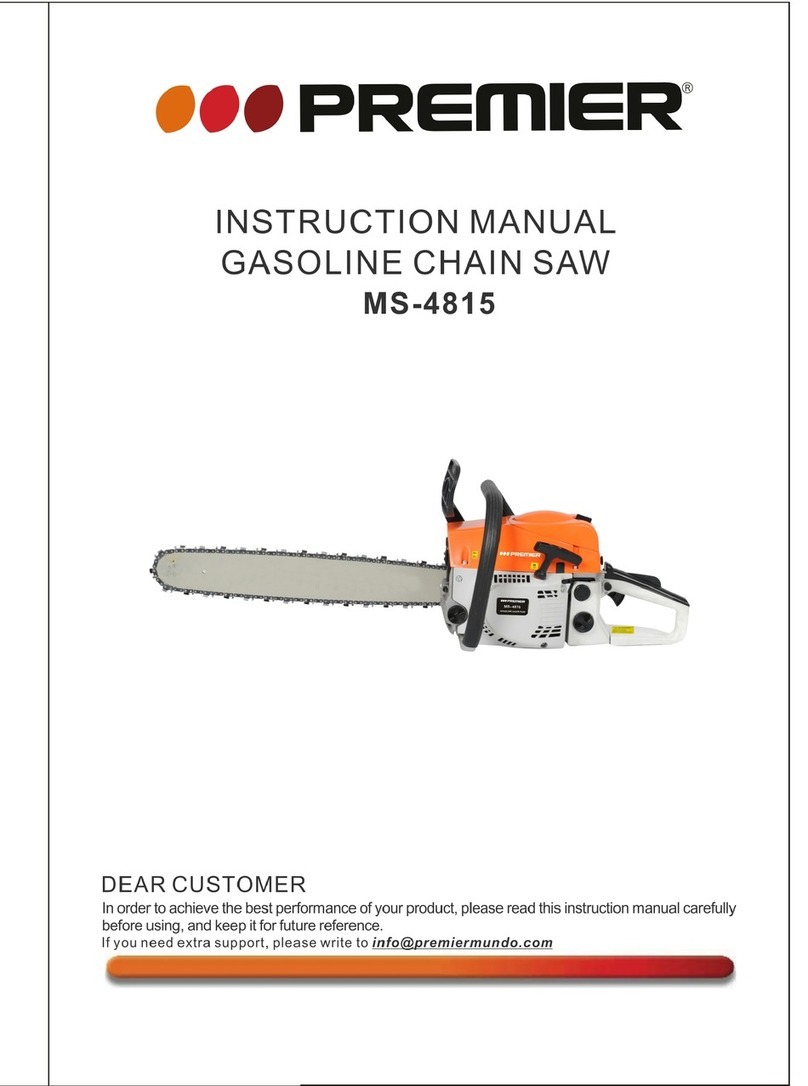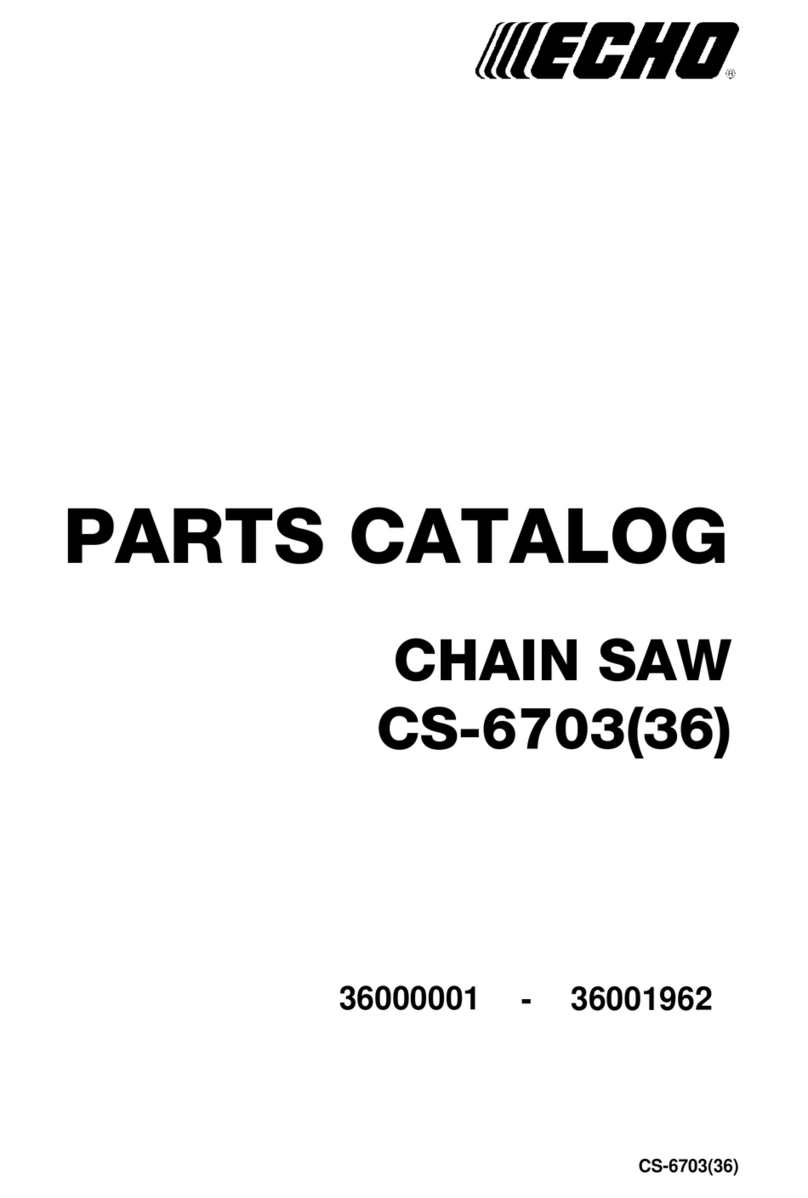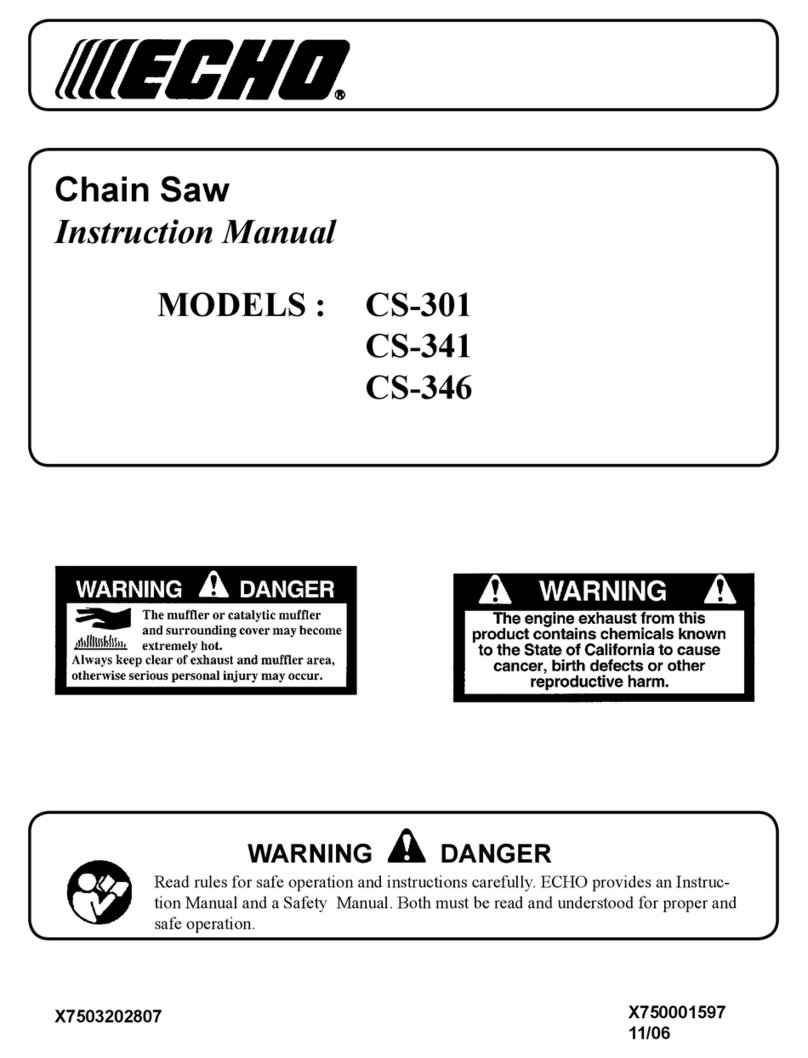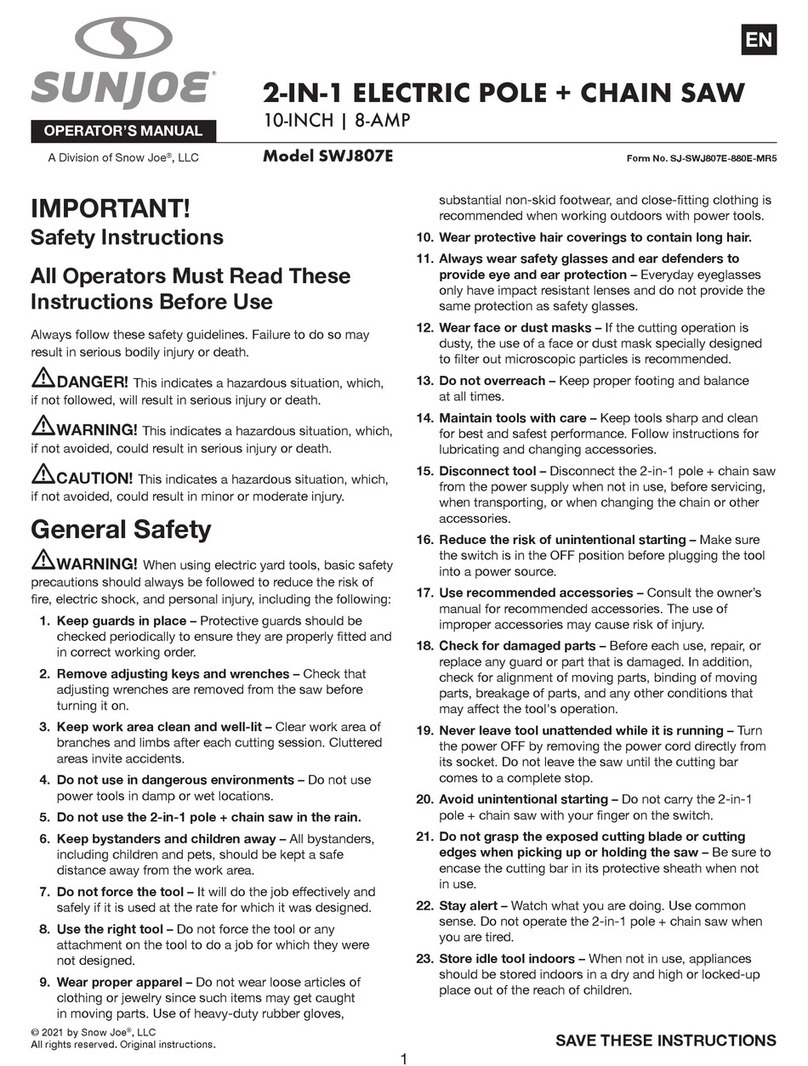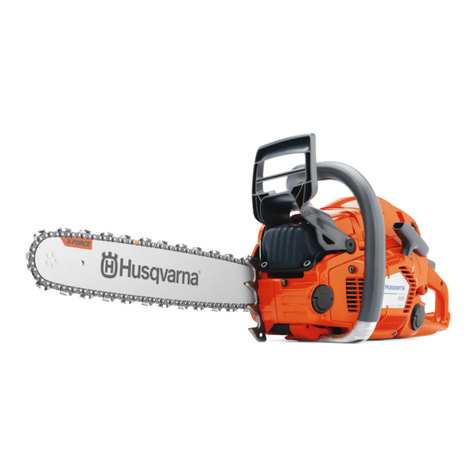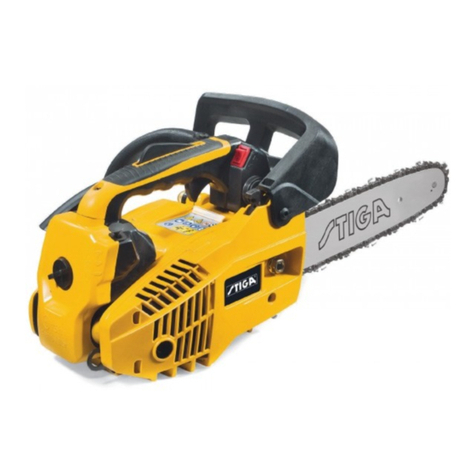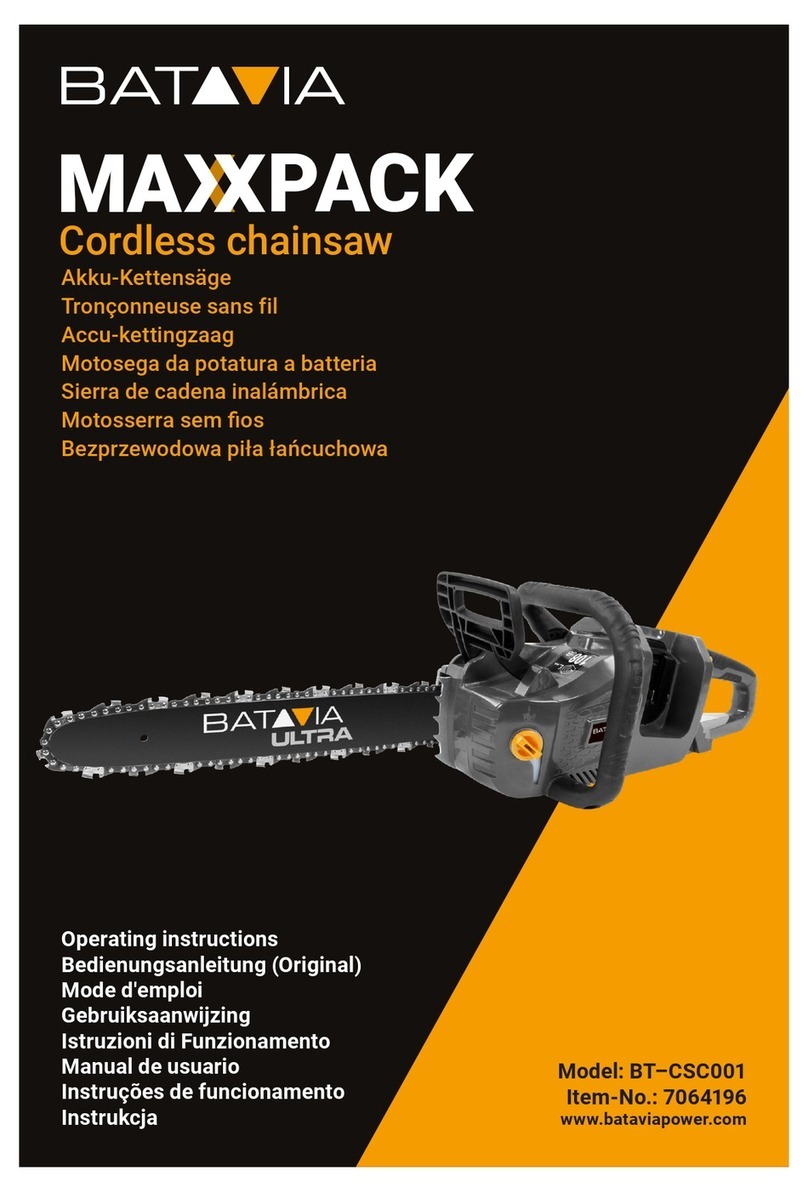
3
Intended use
This power chain saw is only intended for sawing wood outdoors.
General precautions
• To ensure correct operation the user has to read this instruction manual to
make himself familiar with the characteristics of the chain saw. Users insufciently
informed will endanger themselves as well as others due to improper handling.
• It is recommended to lend the chain saw only to people who are experienced in
working with chain saws. Always hand over the instruction manual.
• First users should ask the dealer for basic instructions to become familiarized
with the characteristics of engine powered sawing or even attend a recognized
course of instruction.
• Children and young persons aged under 18 years must not be allowed to operate
the chain saw. Persons over the age of 16 years may, however, use the chain
saw for the purpose of being trained as long as they are under the supervision of
a qualied trainer.
• Operate the chain saw only if you are in good physical condition. If you are tired,
your attention will be reduced. Be especially careful at the end of a working day.
Perform all work calmly and carefully. The user has to accept liability for others.
• Stay alert, watch what you are doing and use common sense when operating a
chain saw. A moment of inattention while operating may result in serious personal
injury.
• Never use the chain saw after having consumed alcohol, drugs or medication.
• The mufer may contain carcinogenic chemicals inside. Avoid contact with them
in case the mufer is damaged.
• Ignition system of the engine emits electromagnetic wave during operation. It
may interfere with medical equipments under certain circumstances, and may
cause serious injury to persons with pace maker. It is recommended that persons
with pace maker shall consult with their physicians and pacemaker manufacturer
before using the chain saw.
• Do not use a chain saw which seems to be modied.
• A re extinguisher and shovel must be available in the immediate vicinity when
working in easily inammable vegetation or when it has not rained for a long time
(danger of re).
• National regulation can restrict the use of the machine. Follow your county’s
regulations relating to use of chain saw.
Personal protective equipment
• In order to avoid head, eye, hand or foot injuries as well as to protect your
hearing the following protective equipment must be used during operation
of the chain saw:
• The kind of clothing should be appropriate, i. e. it should be tight-tting but not
be a hindrance. Do not wear jewellery or clothing which could become entangled
with bushes or shrubs. If you have long hair, always wear a hairnet.
• It is necessary to wear a protective helmet whenever working with the chain saw.
The protective helmet (1) is to be checked in regular intervals for damage and is
to be replaced after 5 years at the latest. Use only approved protective helmets.
• The face shield (2) of the protective helmet (or the goggles) protects against
sawdust and wood chips. During operation of the chain saw always wear a
goggle or a face shield to prevent eye injuries.
• Wear adequate noise protection equipment (ear muffs (3), ear plugs, etc.). Long
time exposure to noise may cause permanent hearing disorder.
• The safety jacket (4) is provided with special signal-colored shoulder straps and
is comfortable and easy to care for.
• The protective brace and bib overall (5) is made of a nylon fabric with 22 layers
and protects against cuts. We strongly recommend its use.
• Protective gloves (6) made of thick leather are part of the prescribed equipment
and must always be worn during operation of the chain saw.
• During operation of the chain saw safety shoes or safety boots (7) tted with anti
skid sole, steel toe caps and protection for the leg must always to be worn. Safety
shoes equipped with a protective layer provide protection against cuts and ensure
a secure footing.
• Wear protective mask when necessary. Long time exposure to exhaust fumes,
chain oil mist, and saw dust can damage your health.
SAFETY PRECAUTIONS
1
2
3
4
56
7
